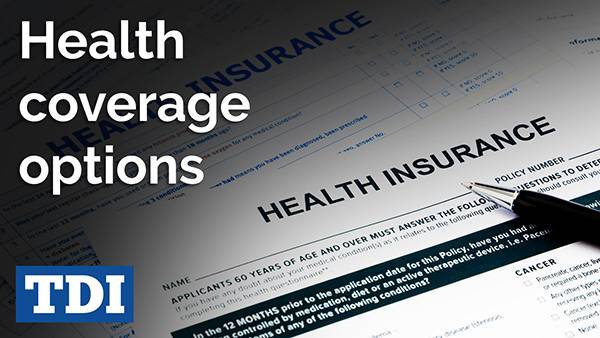This Site Is A Participant In The Amazon Services LLC Associates Program. We may earn money or products from Amazon or the companies mentioned in this post.
When you get health insurance, there are a few important steps to take. First, make sure that you understand the details of your policy coverage and any restrictions or limits on benefits. You should also check if there are any pre-existing conditions that may not be covered.
Additionally, find out what types of healthcare providers are in your network and whether specialists need prior authorization for services. Once you understand the details of your plan, consider setting up an appointment with a primary care physician so they can help coordinate future medical needs or Health Estimates especially preventive screenings and vaccinations. Next, look into getting an insurance card from your provider so you can present it when visiting healthcare facilities or pharmacies for treatment.
Lastly, remember to keep track of all receipts related to medical expenses as many policies offer reimbursement options for certain costs incurred during visits or treatments.
If you’ve recently acquired health insurance, the first thing you should do becomes familiar with the plan. Review your coverage and benefits to make sure you understand what services are covered and how much of the cost your plan will cover. You should also review any restrictions or exclusions that may apply to certain treatments.
Once you know exactly what your health insurance covers, take advantage of it! Schedule regular visits with a primary care physician and any specialists recommended by them for preventive screenings, such as mammograms or colonoscopies. By staying up-to-date on preventative screenings, you can help maintain your overall health and wellbeing while potentially avoiding more expensive medical bills down the line due to an undiagnosed condition.
How To Save At Least $300 On Health Insurance?
How Do I Get the Most Out of My Health Insurance?
To get the most out of your health insurance, it’s important to do your research and understand what coverage you have available. Start by familiarizing yourself with the policy details such as covered services, deductibles, co-pays, and maximums. Also take time to review any exclusions or limitations that may apply.
Once you understand what is covered under your plan, take advantage of preventative care when possible. This can help reduce long term costs associated with illnesses that could be prevented if caught early on. Finally, make sure to stay up to date on all billing information so that you know exactly how much money is being applied towards each service or procedure.
How Does Health Insurance Work in Simple Terms?
Health insurance works in simple terms by providing individuals and families with financial protection against the costs associated with illnesses and injuries. It is designed to cover some or all of the cost of medical services, such as doctor visits, hospital stays, tests, treatments, and prescription drugs. Typically, an individual or family pays a monthly premium for their health insurance plan.
In exchange for this payment, the insurance company agrees to pay a portion of your medical expenses if you need care beyond what your regular preventive appointments provide (e.g., unexpected illnesses or injuries). Depending on your plan type and coverage options selected, they may also offer other benefits such as mental health care or vision and dental coverage.
How Does Insurance Work?
Insurance works by pooling the risks of many individuals and businesses together. When you purchase a policy, you are essentially paying for protection against potential losses that may occur in the future. In return, your insurance company agrees to pay out if certain conditions are met.
This could be anything from covering medical expenses if you have an accident to ensuring repairs on property damage caused by a natural disaster. The amount of money paid out is dependent upon the type of coverage purchased and any applicable limits or deductibles that may apply to the claim.
How Much Does Health Insurance Cost in Texas Per Month?
The cost of health insurance in Texas varies widely depending on the type of plan and coverage you select. Generally speaking, the monthly premiums for an individual policy can range from about $150 to $400 per month, while family policies may cost between $400 and $1,000 per month. Additionally, individuals may need to pay a deductible before their benefits are triggered as well as co-pays or coinsurance payments when they receive medical care.
It’s important to compare plans carefully and take into account all costs associated with each option before making a decision.

Credit: www.ramseysolutions.com
How to Get Health Insurance in Texas?
Texas residents can obtain health insurance through the Health Insurance Marketplace. The Marketplace is available online or by phone and provides a variety of plans from different carriers, allowing you to compare prices and coverage levels. Additionally, Texas has expanded its Medicaid program to cover adults with incomes up to 138% of the federal poverty level (FPL), providing an additional avenue for Texans to get affordable healthcare coverage.
Health Insurance Texas
If you live in the state of Texas, it is important to know that there are a variety of health insurance plans available to meet your needs. From major medical and ACA-compliant plans to short-term coverage and dental or vision benefits, Texans have access to affordable and comprehensive options for their healthcare needs. Whether you need coverage for yourself, or for your family, it’s worth researching all the different types of health insurance Texas has to offer so that you can make an informed decision about which plan is best suited for your individual circumstances.
Health Insurance Texas for Low-Income Adults
Texas offers a health coverage program for low-income adults, known as STAR Health. This program is designed to provide affordable health insurance options to Texas residents who do not qualify for traditional Medicaid programs but still have limited income and resources. It covers physician and hospital services, prescription drugs, preventive care, mental health services, substance abuse treatment, and some vision and dental benefits.
Eligible enrollees must be between 19-64 years of age with incomes at or below 150% of the federal poverty level (FPL).
Conclusion
Overall, health insurance is a vital part of life that should be taken seriously and thoughtfully. There are many different types of coverage available so it’s important to understand which type best suits your needs. It’s also wise to know what services you can expect from the plan and what costs may come out-of-pocket.
By following these tips, you’ll be able to get the most out of your health insurance policy and keep yourself healthy in the process.

Amelia Varley is a professional beauty blogger and freelance writer with a passion for all things skincare, makeup, and holistic wellness. With years of experience in the beauty industry, Amelia shares expert tips, product reviews, and innovative beauty routines with her readers. Her writing is driven by a desire to empower people to look and feel their best through mindful beauty practices. When she’s not writing, Amelia enjoys experimenting with the latest beauty trends and exploring the connection between self-care and confidence.





